 Border Collie Picture
Border Collie Picture Border Collie Picture
Border Collie Picture Border Collie Picture
Border Collie Picture Border Collie Picture
Border Collie Picture Border Collie Picture
Border Collie Picture

COMMONWEALTH OF PUERTO RICO
Status: Commonwealth
Governor: Aníbal Acevedo Vilá (2005)
Capital and largest city (2002 est.): San Juan, 433,412
Other large cities: Bayamón, 224,670; Ponce, 186,112; Carolina, 187,468
Land area: 3,459 sq mi (8,959 sq km); total area: 3,515 sq mi (9,104 sq km)
Population (2010 est.): 3,977,663 (growth rate: 0.3%); birth rate: 11.6/1000; infant mortality rate: 8.2/1000; life expectancy: 78.6; density per sq mi: 1,135. Monetary unit: U.S. dollar
Languages: Spanish and English (both official)
Ethnicity/race: white (mostly Spanish origin) 80.5%, black 8%, Amerindian 0.4%, Asian 0.2%, mixed and other 10.9%
Religions: Roman Catholic 85%, Protestant and other 15%
Literacy rate: 94.1% (2002)
Economic summary: GDP/PPP (2009 est.): $68.14 billion; per capita $17,200 Real growth rate: –3.9%. Inflation: 6.5% (2003 est.). Unemployment: 12% (2002). Arable land: 4%. Agriculture: sugarcane, coffee, pineapples, plantains, bananas; livestock products, chickens. Labor force: 1.3 million (2000); agriculture 3%, industry 20%, services 77% (2000 est.). Industries: pharmaceuticals, electronics, apparel, food products, tourism. Natural resources: some copper and nickel; potential for onshore and offshore oil. Exports: $46.9 billion (f.o.b., 2001): chemicals, electronics, apparel, canned tuna, rum, beverage concentrates, medical equipment. Imports: $29.1 billion (c.i.f., 2001): chemicals, machinery and equipment, clothing, food, fish, petroleum products. Major trading partners: U.S., UK, Netherlands, Dominican Republic, Ireland, Japan (2004).
Communications: Telephones: main lines in use: 1.038 million (2005); mobile cellular: 3.354 million (2005). Radio broadcast stations: AM 74, FM 53, shortwave 0 (2005). Radios: 2.7 million (1997). Television broadcast stations: 32 (2006). Televisions: 1.021 million (1997). Internet Service Providers (ISPs): 413 (2007). Internet users: 915,600 (2005).
Transportation: Railways: total: 96 km (2006). Highways: total: 25,735 km paved: 24,353 km (includes 427 km of expressways) unpaved: 1,382 km (2005). Ports and harbors: Guanica, Guayanilla, Guayama, Playa de Ponce, San Juan. Airports: 29 (2007).
International disputes: none.

COMMONWEALTH OF PUERTO RICO
The Commonwealth of Puerto Rico is located in the Caribbean Sea, about 1,000 mi east-southeast of Miami, Fla. A possession of the United States, it consists of the island of Puerto Rico plus the adjacent islets of Vieques, Culebra, and Mona. Puerto Rico has a mountainous, tropical ecosystem with very little flat land and few mineral resources.
Puerto Rico's governor is elected directly for a four-year term. A bicameral legislature consists of a 27-member Senate and a 51-member House of Representatives, all elected for four-year terms. From 1940 to 1968, Puerto Rican politics was dominated by a party advocating voluntary association with the U.S. Since then, the New Progressive Party, a party favoring U.S. statehood, has won five of the last eight gubernatorial elections. Puerto Ricans have twice voted to determine their political status. In 1967, the outcome was Commonwealth 60%; statehood 39%; independence 1%. In 1993, Commonwealth dropped to 48.6%; statehood rose to 46.3%; independence polled 4.4%; and 0.6% of the ballots were blank or spoiled.
Under the Commonwealth formula, residents of Puerto Rico lack voting representation in Congress and do not participate in presidential elections. As U.S. citizens, Puerto Ricans are subject to military service and most federal laws. Residents of the Commonwealth pay no federal income tax on locally generated earnings, but Puerto Rican government income-tax rates are set at a level that closely parallels federal-plus-state levies on the mainland.
When Christopher Columbus arrived there in 1493, the island was inhabited by the peaceful Arawak Indians, who were being challenged by the warlike Carib Indians. Puerto Rico remained economically undeveloped until 1830, when sugarcane, coffee, and tobacco plantations were gradually developed. After Puerto Ricans began to press for independence, Spain granted the island broad powers of self-government in 1897. But during the Spanish-American War of 1898 American troops invaded the island and Spain ceded it to the U.S. Since then, Puerto Rico has remained an unincorporated U.S. territory. Its people were granted American citizenship under the Jones Act in 1917; were permitted to elect their own governor, beginning in 1948; and now fully administer their internal affairs under a constitution approved by the U.S. Congress in 1952. In spite of broad popular support for the autonomy of the Commonwealth government and a rapidly modernizing industrial society, there were expressions of dissatisfaction. Puerto Rican extremists dramatized their desire for independence with an attempt to assassinate President Truman on Nov. 1, 1950, and on March 1, 1954, they wounded five congressmen in an attack on the U.S. Capitol.
A self-help program of economic development and social welfare (called “Operation Bootstrap”) was forged in the 1940s by four-time governor Luis Muñoz Marín. In a little more than four decades, much of the island's crushing poverty was eliminated. This was done partly through the development of manufacturing and service industries, the latter related to an enormous growth in tourism. Also, many Puerto Ricans migrated to large cities on the mainland U.S.
Puerto Rico is a major hub of Caribbean commerce, finance, tourism, and communications. San Juan is one of the world's busiest cruise-ship ports, and Puerto Rico's standard of living continues to be among the highest in the Western Hemisphere. Its future political status, however, remains unclear. On March 4, 1998, the U.S. House of Representatives passed a bill that called for binding elections in Puerto Rico to decide the island's permanent political status.
Since the 1940s, the U.S. Navy had used Vieques island as a bombing range. Protests against the exercises grew in recent years, and in a July 2001 referendum, residents of the island voted overwhelmingly to close the base. The navy withdrew from Vieques in May 2003.
The Nov. 2, 2004, gubernatorial elections led to a two-month recount and a court challenge. On Jan. 2, 2005, Aníbal Acevedo Vilá of the Popular Democratic Party was declared governor. He received 48.4% of the vote, and his main challenger, Pedro Rossello of the New Progressive Party, 48.2%. Acevedo supports the existing U.S. territorial status of the island; Rossello supports statehood for Puerto Rico.
In May 2006, a political standoff led to a two-week-long budget crisis resulting in the partial shutdown of the government, including all public schools. More than 100,000 workers went without pay.




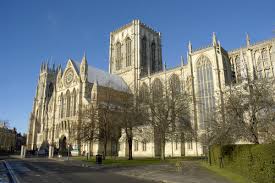
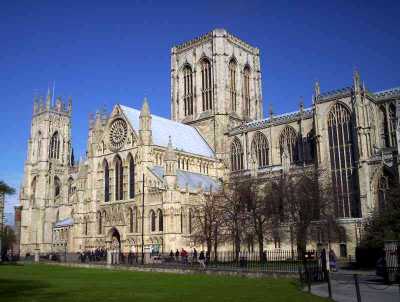


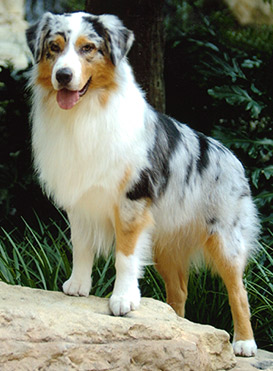 The Miniature Australian Shepherd is almost identical in appearance to the standard or full sized Australian Shepherd in everything but size. The Miniature Australian Shepherd is actually less than 18 inches tall (46 cm) at the withers when full grown, and there is also a smaller version of the breed known as a Toy Australian Shepherd which must be less than 14 inches or (36 cm) when fully grown. A still smaller variety known as the Tea Cup must be less than 12 pounds when fully grown.
The Miniature Australian Shepherd is almost identical in appearance to the standard or full sized Australian Shepherd in everything but size. The Miniature Australian Shepherd is actually less than 18 inches tall (46 cm) at the withers when full grown, and there is also a smaller version of the breed known as a Toy Australian Shepherd which must be less than 14 inches or (36 cm) when fully grown. A still smaller variety known as the Tea Cup must be less than 12 pounds when fully grown. The Miniature Australian Shepherd is an athletic dog that should appear solid and sturdy without appearing stocky. They have a medium length straight coat that can have a slight wave but never a curl. The coat is double with a somewhat thick and coarse outer coat covering a soft, downy inner coat. The outer coat is not coarse feeling but is rather smooth to the touch. The body is longer than the dog is tall at the shoulders, and the ribcage and chest is moderately developed. The topline is very straight from the withers to the hips. The legs are straight and the feet are slightly arched with the back legs having a well defined stifle that gives the dog its ready to jump into action appearance.
The neck is in proportion to the body and flows naturally into the powerful shoulders. The head is carried high and level when walking but often carried lower when working livestock. The muzzle is tapered and there is a well defined stop between the muzzle and the eyes. The eyes may be different colors including blue, brown, amber and flecked but are always slightly almond shaped and very clear and alert looking. The ears are carried high on the head and are full triangles with slightly rounded tips. The top one quarter to one half of the ear should fold forward and ears with no fold or ears that don’t stay erect are considered faults in show dogs.
The legs and lower body are covered with slightly longer hair known as furnishings. The Miniature Australian Shepherds are either born with a very short, stubby tail known as a natural bobtail, or the tail in docked when they are a few days old. In some countries docking is prohibited so the dogs may be seen with natural tails that are still shorter than other Collie breeds.

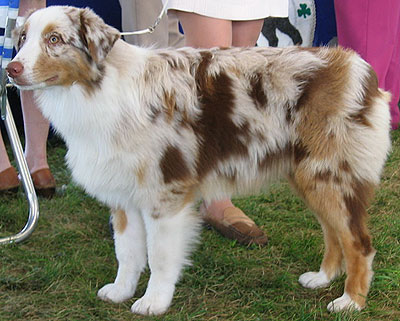



It's a long way from Edinburgh to Samoa. Robert Louis Stevenson made his life's journey in 44 short years, and as is true for everyone, some choices were based on necessity and some on conviction.
Growing up an only child, Stevenson's early choices were dictated by his father's wishes and by his own poor health (he was a life-long "consumptive" as they said in those days). The family business was designing and building lighthouses, but young Stevenson couldn't bear the thought and initially compromised with his father by studying law instead.
 While in school, he spent his summers in France (for his health and pleasure). Having realized that he was meant to be a writer, he began with travel essays and books. After finishing school, he moved to the continent, abandoning any thought of practicing law. Due to his health and other overriding interests, he never lived in Scotland again. But his abiding love for his country, for Scottish history and culture, never died and his fictional works pay tribute to the land of his birth.
While in school, he spent his summers in France (for his health and pleasure). Having realized that he was meant to be a writer, he began with travel essays and books. After finishing school, he moved to the continent, abandoning any thought of practicing law. Due to his health and other overriding interests, he never lived in Scotland again. But his abiding love for his country, for Scottish history and culture, never died and his fictional works pay tribute to the land of his birth.
At the age of 30, Stevenson married Fanny Osbourne - American, divorced, mother of two, and eleven years his senior. They had met in France, lived in sin, and later he followed her to California. There they lived in literary splendor on very limited material means. He continued writing travel books, including one on his journey to California and one entitled The Silverado Squatters about their honeymoon at an abandoned silver mine.
The idea for Treasure Island came on a visit to Scotland, while drawing a treasure map with his 12-year-old stepson. Published in 1883, this was Stevenson's first novel, written for young people but popular with adults as well. Dr. Jekyll and Mr. Hyde, published three years later, became a best-seller. Kidnapped came out the same year and his career was established.
He and Fanny had returned to Europe, living there for several years, but returned to California in 1887 after his father's death. In 1888, he and his family decided to sail around the Pacific islands, which marked a new epoch in his writing career and in his health. The climate was so good that they decided to stay, making their home on the island of Upolu in Samoa. RLS wrote many fascinating stories about the South Seas, as well as nonfictional travel stories. Having fought for good health all his life, he died of a sudden stroke in December 1894.
Robert Louis Stevenson was the kind of person who would change his name (from Lewis to Louis), buck against his father's ambitions, marry an older woman (divorced!), travel around the world, and never, never let his health dictate his enjoyment of life or keep him from his work. At the same time, he never broke the bonds of family (his mother lived with him after his father's death), loved children, and held a deep regard for Scotland's traditions and history.
This duality is the hallmark of Stevenson's body of work - most blatantly expressed in Jekyll and Hyde, but present also in Kidnapped and The Master of Ballantrae (along with other works). Stevenson understood that both people and cultures have a dual nature, battling between good and evil, the pull of the past and the push to the future, a complexity that plays out in our lives on many levels. In Kidnapped, the two protagonists are a lowland Scot and a swashbuckling Highlander and the interplay of their characters is the focal point of the story - a clash between the "two Scotlands". In The Master of Ballantrae, the two brothers, good and evil, are yet but two sides of the same coin struggling for supremacy. Set during the Jacobite risings, this story also contrasts the dual nature of Scotland's heritage.
Today, we tend to avoid the harshness of dualism - finding the good in "the dark side of the force," transforming evil from a reality to a perception - we call this "integration". To this extent, we recognize the duality of our inner natures, but we're left with a blandness, a lack of joy and verve. We accept ourselves, but in so doing cease to overcome. For Stevenson, life was a struggle - for health, for accomplishment, for appreciating good and for overcoming evil - a struggle he felt worthwhile. If any man ever lived his life to the full, it was Robert Louis Stevenson.
The Celestial Surgeon
If I have faltered more or less
In my great task of happiness;
If I have moved among my race
And shown no glorious morning face;
If beams from happy human eyes
Have moved me not; if morning skies,
Books, and my food, and summer rain
Knocked on my sullen heart in vain: --
Lord, Thy most pointed pleasure take
And stab my spirit broad awake;
Or, Lord, if too obdurate I,
Choose Thou, before that spirit die,
A piercing pain, a killing sin,
And to my dead heart run them in!
By Robert Louis Stevenson


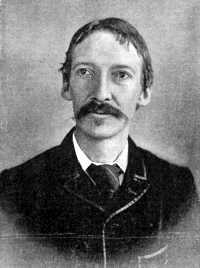

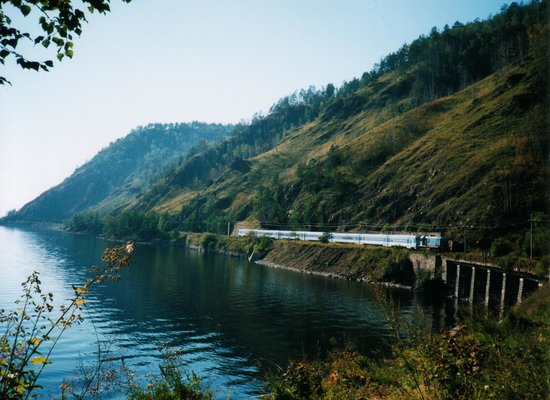
 The Lake Baikal, Russia
The Lake Baikal, Russia The Lake Baikal, Russia
The Lake Baikal, Russia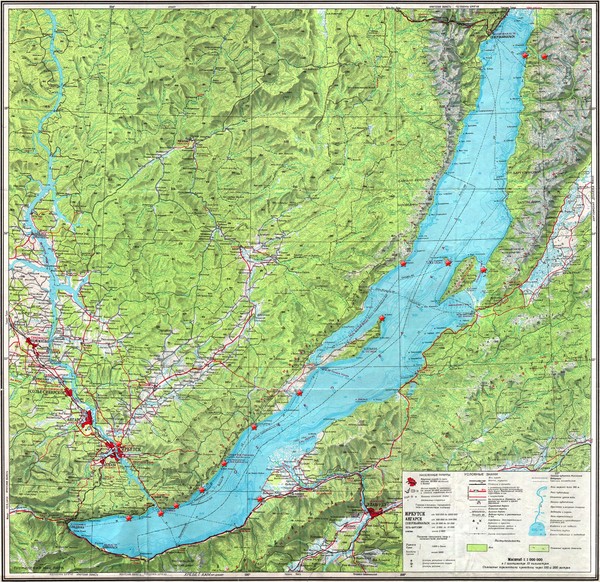 The Lake Baikal, Russia
The Lake Baikal, Russia The Lake Baikal, Russia
The Lake Baikal, Russia
 From its earliest frontier days, Chicago has had some of the best nightlife in the US. "Sweet Home Chicago", birthplace of Muddy Waters' urban blues, as well as R&B's Chess Records, is still going strong, inspiring the energetic dance beat of 1980s house music as well as the groundbreaking jazz of the Art Ensemble of Chicago. Nightclubs aplenty are all over town, especially along Halsted Street, Lincoln Avenue and Clark Street on the North Side. Uptown, at the intersection of North Broadway and Lawrence, is a bit down-at-the-heel, but has half a dozen good venues. The best gay clubs congregate in the Lincoln Park area. Highbrow pursuits are also well provided for: Chicago's classical music, dance and theater are world-class.
From its earliest frontier days, Chicago has had some of the best nightlife in the US. "Sweet Home Chicago", birthplace of Muddy Waters' urban blues, as well as R&B's Chess Records, is still going strong, inspiring the energetic dance beat of 1980s house music as well as the groundbreaking jazz of the Art Ensemble of Chicago. Nightclubs aplenty are all over town, especially along Halsted Street, Lincoln Avenue and Clark Street on the North Side. Uptown, at the intersection of North Broadway and Lawrence, is a bit down-at-the-heel, but has half a dozen good venues. The best gay clubs congregate in the Lincoln Park area. Highbrow pursuits are also well provided for: Chicago's classical music, dance and theater are world-class. For what's-on information, Chicagoans pick up the excellent free newspaper The Reader (copies comes out Thursday afternoon and are usually all gone by Saturday). The weekly New City and the gay and lesbian Windy City Times are good sources as well. Full listings also appear in the Friday issues of the Chicago Sun-Times and the Chicago Tribune, and Chicago magazine has useful arts and restaurant listings. The Gramaphone Ltd record store at 2663 N Clark St (tel 773/472-3683) is the best place for details of one-shot dance nights.
 Chicago city at night
Chicago city at night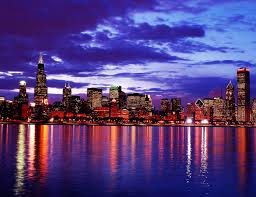 Chicago city at night
Chicago city at night Chicago city at night
Chicago city at night
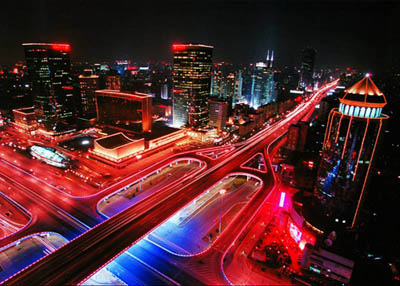 The City
The CityThe school provides occasional sight seeing tours for international students. It is very easy to get around by yourself as well, especially for English-speakers.
Transportation
Beijing city is made of a few layers of main streets, like a square-shaped onion. The forbidden city is located in the center. The school is located in the southern suburb of the city, about 40 by bus or 25 minutes by taxi to the city center. It is very easy to get around. All streets are labeled in English names. The city has many kinds of transportations, including subway, bus, taxi, and pedicycles. The cost of transportation is low. The subway ticket is about $0.60; the bus ticket is about $0.20 to $0.50, and the taxi starts from $1.5 and up for a ride. Of course, you can also enjoy cycling if that is your hobby, since the bicyle lanes are almost as wide as automobile lanes.
 Beiging At Night
Beiging At Night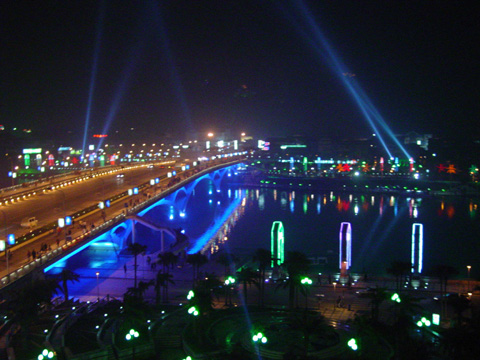 Beiging At Night
Beiging At Night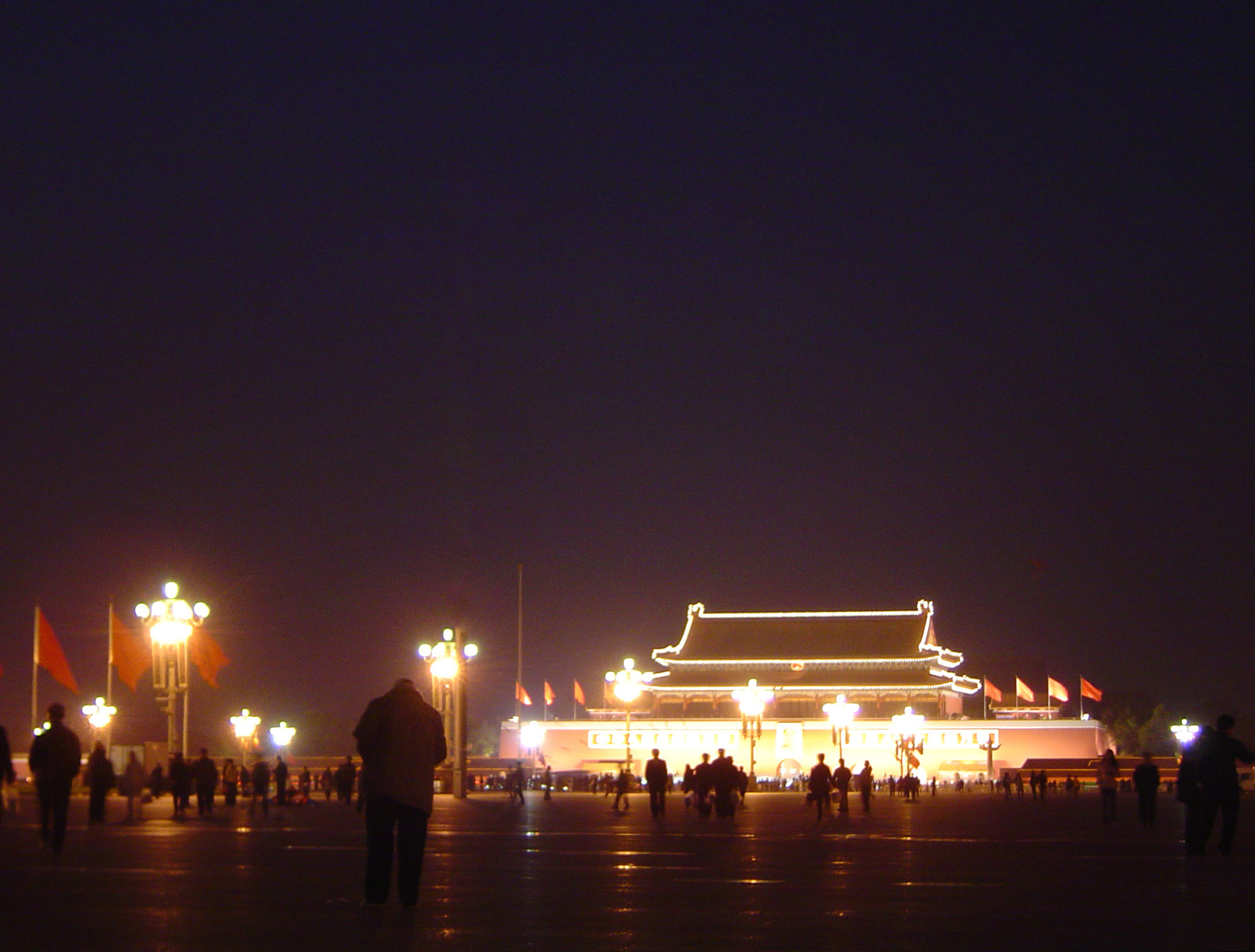 Beiging At Night
Beiging At Night

New York City’s historic ten sister cities are:
| Tokyo (1960) Beijing (1980) Madrid (1982) Cairo (1982) Santo Domingo (1983) | Rome (1992) Budapest (1992) Jerusalem (1993) London (2001) Johannesburg (2003) |



